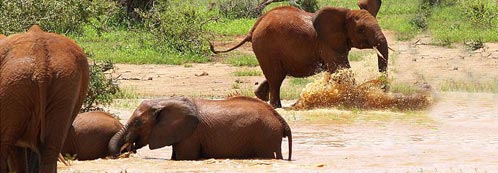Field Notes
January - April 2023
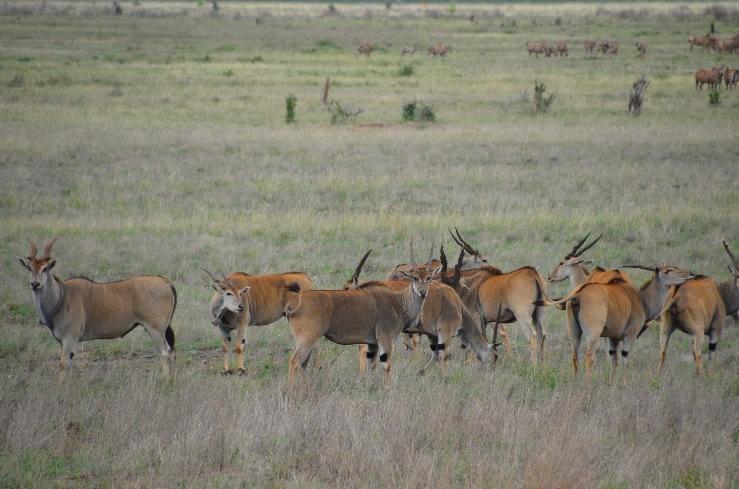
There were a few showers in January while February and March were dry. In late March and early April massive sand/dust storms from the east, blew across the Ndara plains into the Hills Bull Area. There were a few showers in mid-April, but were patchy. Eland, Oryx, Zebra, Impala, Waterbuck and Gazelle aggregated in areas where the grass was green. By the end of April rains were wide spread, waterholes were full and the grass was tall. In amongst the grass, herbs grew and vines draped over shrubs providing a favored food for elephants. In mid-April 100 Giraffe were dispersed in the Bull area surrounding the hills. Some were climbing among the rocks to Acacia with new shoots (photo 2023).
Bulls
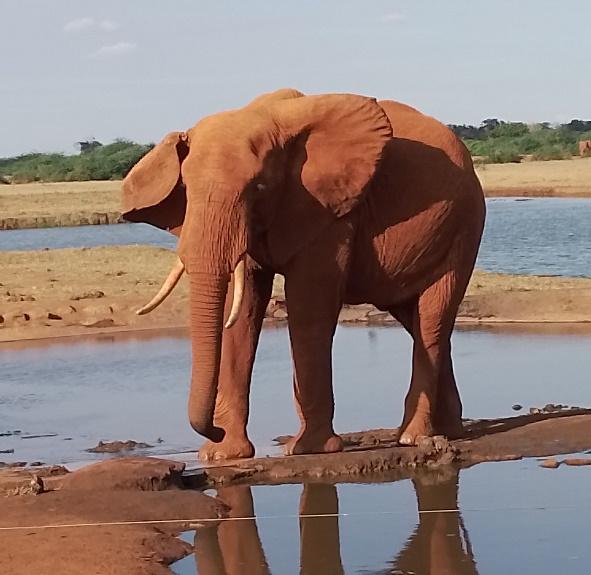
Swift was first photographed and named 7 years ago in 2016, on the east side of Mzinga Hill heading east following a family. With his distinct broken right ear, he is easy to spot within a group. Between 2016 and 2019 he was most often with family units. In 2020 he started to spend more time with other young males in small groups or alone. In April 2023, he was with six bulls between 20 and 30 years old. He spends most of his time in the bull area surrounding the hills and on occasion moves south to Voi Riverine West. I’ve spotted him three times alone on the top of Voi Hill (929 meters / 3,045 feet) feeding on shrubs. He associates with Breeze, Wishbone and Creek in a bull group. He most often associates with four families: Nola-Nutmeg, Lilac-Jute, Batik-Azalea and Savanna-Summer (photo 2022).
Families
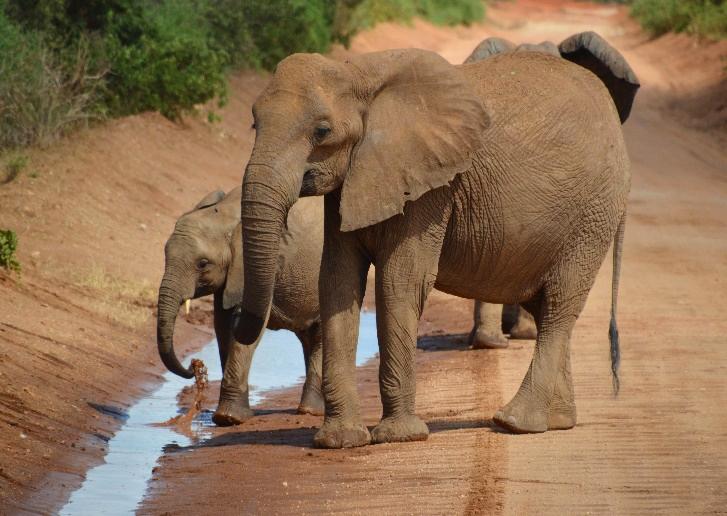
Evergreen was first photographed / named 28 years ago (1994) in Tsavo East NP. She was in a family unit with Jezebel, Dimond and their offspring. At that time, she had no offspring and no mammary gland development. In January 1997 she had her first calf, Emma. Emma’s trunk was 1/4th the length of a normal elephant. In 1997 and 1998 they were in the park, but in 1999 they had moved to Taita Ranch, land adjacent to the National Park. Between 2000 and 2001 I often found them at the ranch. I did not see them in 2002, but in 2003 they were back in the park near Voi Riverine. In 2004 I found Evergreen but Emma was missing and was not seen again. Since 2005 Evergreen has had three calves, two females and one male (photo 2023).
May - August 2023
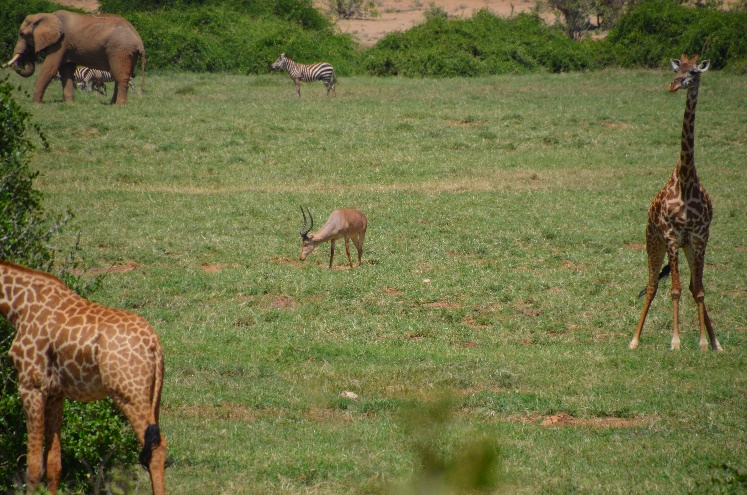
There were several rain storms in May and early June. Hundreds of caterpillars and butterflies emerged in May. In July the temperature dropped with very strong winds. August was dry, windy and cool. In June several Waterbuck had newborns in the Bull Area. Also, in June a Hirola (photo left) was with a large group of Giraffe and Zebra, several Ostrich and a lone elephant bull in the Voi River grassland. Hirola are a critically endangered species so it was good to see one thriving. In the bull area, in a valley between two hills, 13 lions were resting under bushes. Unfortunately, 26 vehicles were surrounding them. The next day several Vultures were circling the same area. Although Vultures are seen in Tsavo they are a relatively rare sighting.
Bulls
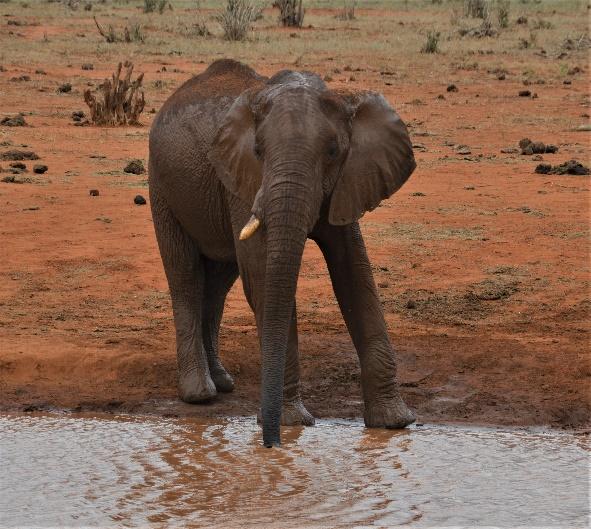
During May and June many bulls were in the south western region of the bull area. Some alone, in small bull groups and a few with families. In June an aggregation of bulls and families were in a grassland area, including Pisces, Pewter and Nutmeg. Several of the bulls were between 35 and 40 years old, two of them were in musth. One musth bull, 40 years old, was guarding a female and dominant, chasing other bulls that approached. While the dominant bull was running after a bull the same age, a young bull 20 years old approached the female he was guarding, but when the musth bull returned the young bull backed off. When the musth bull returned he picked up a large log, balanced it between his tusk and trunk carrying it as he threatened other bulls. In June Milo (photo right) was drinking and splashing at a water pipeline leak pool. He is often alone or with a family in the bull area.
Families
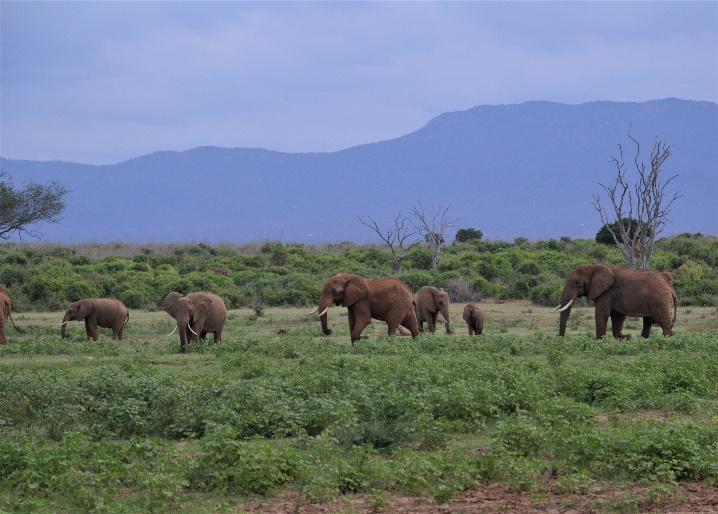
In May and June several families climbed Voi Hill – up and over the top. Even the smallest calf followed close behind the mother, who slowed her pace to accommodate her calf. There are numerous well-traveled elephant paths that zig-zag up the hill. Families also aggregated in May and June in the grassland and hill areas in the bull area: Azalea with Batik and on occasion with Birch or Bauhinia, Nutmeg, Savanna and Justine with B2. All the females were accompanied by one or two offspring ages two to eight years old. Families along the Voi riverine included Parsley, Olive and Evergreen. Olive (splayed tusks-photo left) was in the grassland with another family and two bulls north of Voi Riverine.
September - December 2022
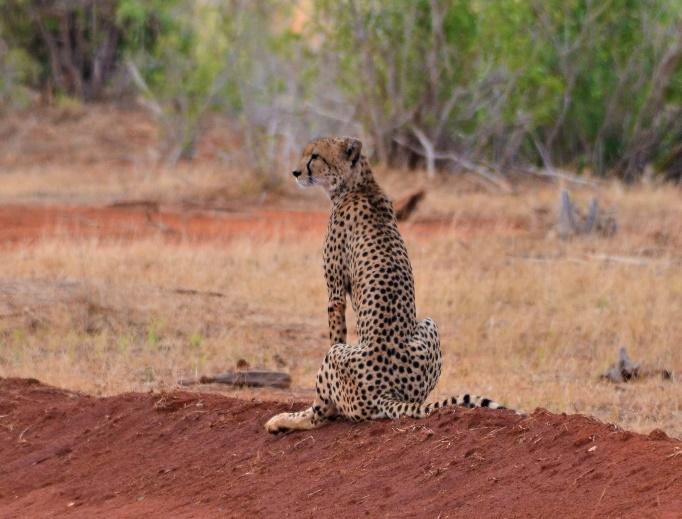
September and most of October were dry and windy. In late October the rains started and continued through November and December. During the rains triple rainbows became a common occurrence. In late November a group of 16 Giraffe were feeding on the new shoots of Delonix trees on the slope of Mzinga Hill. Migratory birds arrived in the Bull area in mid-November: Barn Swallows, Eurasian Rollers, Steppe Eagles, Bee-eaters and Harriers. In December many insects emerged from the soil: beetles, termites and army worms. After one storm, large flocks of Swallows, Swifts, Martins, Bee-eaters and several Horn-bills were catching termites as they emerged from the ground. An Elephant Shrew stood next to a hole in the ground catching termites as they left the hole.
Bulls
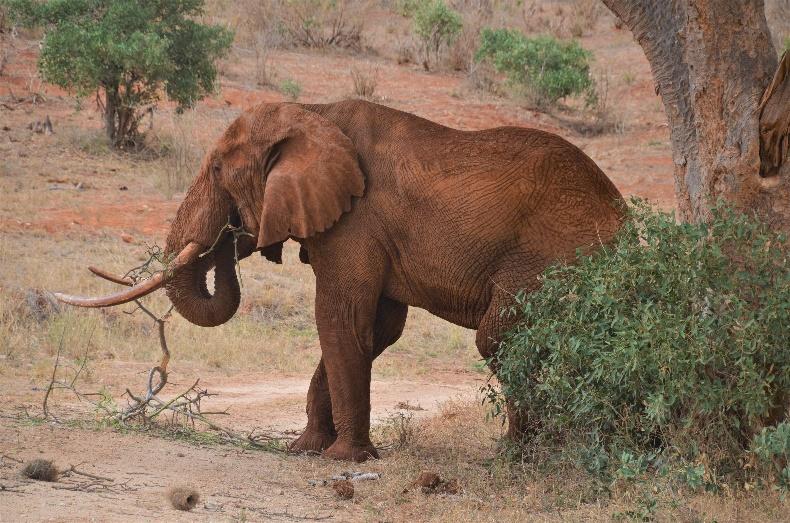
During the dry months of September and October several young bull groups were at the periphery of family groups in the southern Hills bull area. In October Sunray was with two young bulls, 15 years old feeding on grass on the slope of Mzinga Hill. Both bulls followed Sunray as he headed north. When the rains started Milo, Swift, Pewter and Magnet left the Hills bull area heading east to Voi River, where families often aggregate during the rains. In November and December Tweed (photo right) spent many days feeding in the southern bull area. He was often accompanied by one or two younger bulls. In late December he was in musth following Asalea and Batik as they headed east to Voi River. The next day a 45-year-old unknown bull in musth headed east along the same path Tweed took.
Families
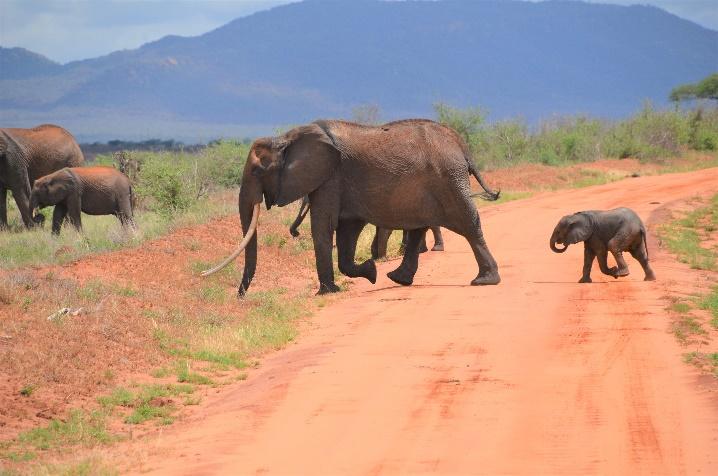
Before the rains many families spent time on the slope of Mzinga Hill feeding on grass and shrubs: Azalea-Batik, Spring, Nutmeg, Walnut and Cresent. By late-November the grass was so tall, calves younger than 5-years old were not visible. Chestnut (photo left) and her offspring were often followed by two-three young males 10-12 years old in the valley between Mzinga and Lion Hills. In December a young Hartebeest joined Azalea and Batik in the valley feeding near the main road. A few days later Tweed, in musth, joined them. Last year in April Azalea and Batik were with Tweed again while he was in musth near Voi River. By late December very few groups were in the southern bull area.
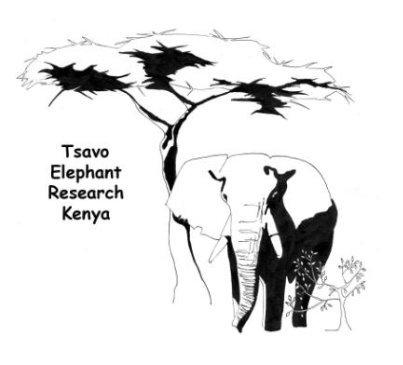
Tsavo Elephant Research Needs Your Help.
Donations are needed to continue this 30+ year field study
and support a Kenyan research field team.
We monitor the behaviors of Tsavo known bulls and families:
group dynamics, offspring & survival, musth cycles and habitat use.
Please click here or on the donate button
to send your donation.
Thank you!
Barbara
